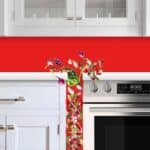If you want to cut your cooking time while also providing more nutrients and tons of flavor, you might be tempted to use a pressure cooker.
Depending on the meat, cut, and fat content, cooking techniques can vary when using a pressure cooker. Well, don’t worry, we’re here to help you out with that, one dish at a time.
In the following article, we’re going to delve into whether meat should be submerged in a liquid when pressure cooking.
Believe me, by the end of this read, people will round up behind you, waiting for your delicious meals – you future pressure cooking master.
Conventional cooking is one thing, while pressure cooking is an entirely different beast.
Should you submerge it?
I’m going to give you a brief explanation of why not to, and then explain the process in the next few paragraphs.
No, do not submerge the meat in the liquid. You should keep the water level less than two-thirds of the total volume for the pressure to have room to cook your meat.
Although controversial at times, and each person will tell you that they know for sure they have the correct answer, let’s think about it.
The water is being heated, which will generate the increased temperature – the origin of the pressure that will cook your meat.
In theory, while you could submerge your meat in the water, you would only be using the temperature of the water for your cooking instead of the produced pressure.
All in all, while some choose to submerge the meat in the water while fixing lunch, it is better to let the pressure do its work – it is a pressure cooker, after all.
Using the temperature alone will serve you very little in your quest for an ideal meal.
Meanwhile, the temperature and pressure combined will ensure the removal of any pathogen and produce a slice of deliciously tender meat you can safely and healthily enjoy and be proud of.
I often like to experiment with new, old, and interesting cooking techniques.
After you’re finishing reading this article, click here to learn how to sous vide with a slow cooker.
Add a multicooker to your arsenal
It can be challenging not to have the proper equipment for the job.
At the same time, I don’t want to fill my cupboards with 30 different pieces of equipment to achieve different things.
That’s why I invested in a multicooker, which is pretty darn close to cooking 30 different ways.
I’ve created a complete guide here on how multicookers can cook a variety of things all in one pot and will fit your budget too.
Save the vitamins and don’t submerge
- Vitamins can have different forms, including water-soluble ones. Merely heating your food will get rid of the water and those vitamins (up to 90%).
- Eliminate the pathogens. Studies have proven the efficacy of pressure cookers to rid your food of certain bacteria. This fact could be explained by the high temperatures produced, which will undoubtedly be challenging for microorganisms to survive.
- In addition to the high temperatures you get, that’s not the only factor you get in pressure cookers. Pressure, instead of temperature, will make sure your meat will not end up thick, leathery, and inedible.
What happens when pressure cooking meat
- It loses a bunch of its weight in water. This is, of course, due to the heat coming from the pressure cooker, so don’t panic. The pressure will make up for it in tenderness.
- Long gone are the days of hard-as-wood meat, and in comes the sweet tender delish. This happens because meat contains collagen, a connective tissue that keeps material together. In the process, collagen will be broken down due to pressure. This is the opposite of what happens when you simply heat the meat and create a hard piece of steak that you’ll inevitably regret. The bright side about this tip is that any type of meat can become tender since collagen is present in a lot of animals and us as well.
When it comes to pressure cooking, I love using my Instant Pot due to its ability as a multi cooker. It can Air Fry(specific models), bake, sterilize, and more.
If you haven’t heard of the Instant Pot by now, where have you’ve been? It’s the number one multi cooker in North America!
In a recent article, I do a deep dive into what makes the Instant Pot so badass! Read here(chart included).
Avoid these food ruining mistakes
- Leaving it for too long. There is no rule for everything – each type of food takes a certain amount of time. Knowing how long your particular meal should take will save you from ruining your dish, either from leaving it too long or too little. Remember, undercooking is always better than overcooking, which leaves no chance of recovery.
- Don’t use too much, as this could take much longer to evaporate. The more water you use, the longer it will take. Also, don’t fill over two-thirds of the pressure cooker – this is because you need room for the pressure to rise up and reach the food.
- Don’t use too little water. A tiny amount of water means that you won’t have enough steam to cook the meal.
- Don’t put different foods at the same time unless the recipe calls for you to do so. Remember, there is no rule for every meal – a time to perfectly fix one food could mean overdoing it for another.
One thing I like to avoid as much as possible is the smell of food filling up the kitchen. In a recent article, I discuss how to deal with traveling food smells.
Things you should do to enhance your meal
- Brown the meat. If you want a rich flavor, sear the meat on mid-high before doing the rest of your work in the pressure cooker. Although not necessary, it is highly recommended. Do not cut the meat for this particular step. Also, make sure you got all sides. You should do this step with the lid off or in a pan with oil.
- On the other hand, when it’s time for the pressure cooker, do cut your meat into roughly equal pieces so they can all cook at the same duration of time.
- Set a timer or an alarm to know precisely how long the process has been going for. Some pressure cookers already have that feature. Otherwise, it’s on you to keep track. For this tip, you can check the timetables for each food you’re preparing.
- Don’t forget to add your favorite seasoning, the way you like it, or how the recipe requires it.
- Don’t open the lid while it’s still cooking or release the pressure before the right amount of time has passed. I know you can’t wait to get a taste but holding your breath a little longer will ensure you’ll get the best tasting meat.








